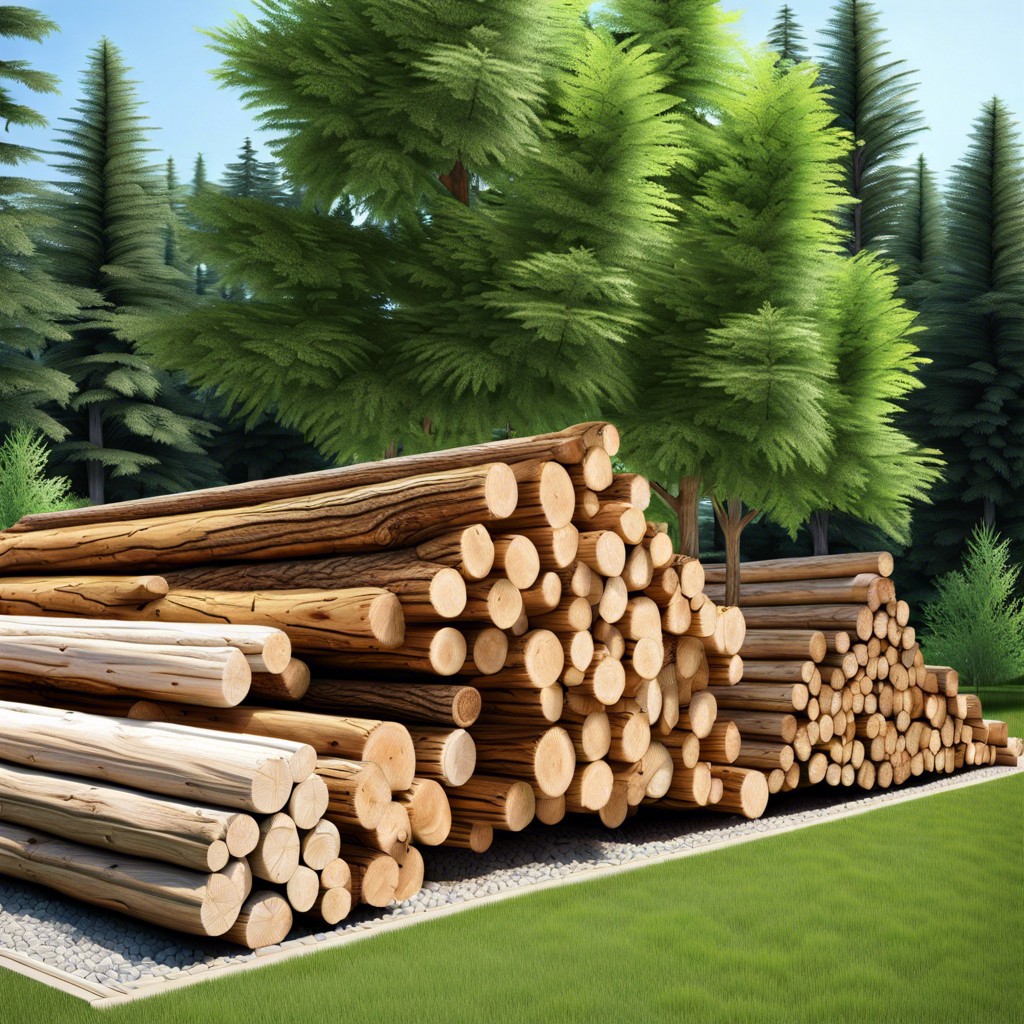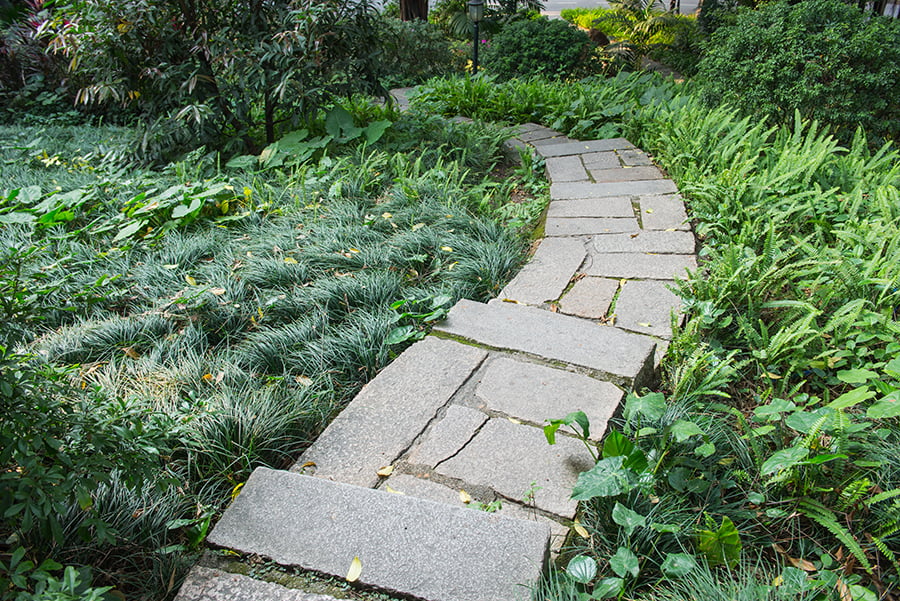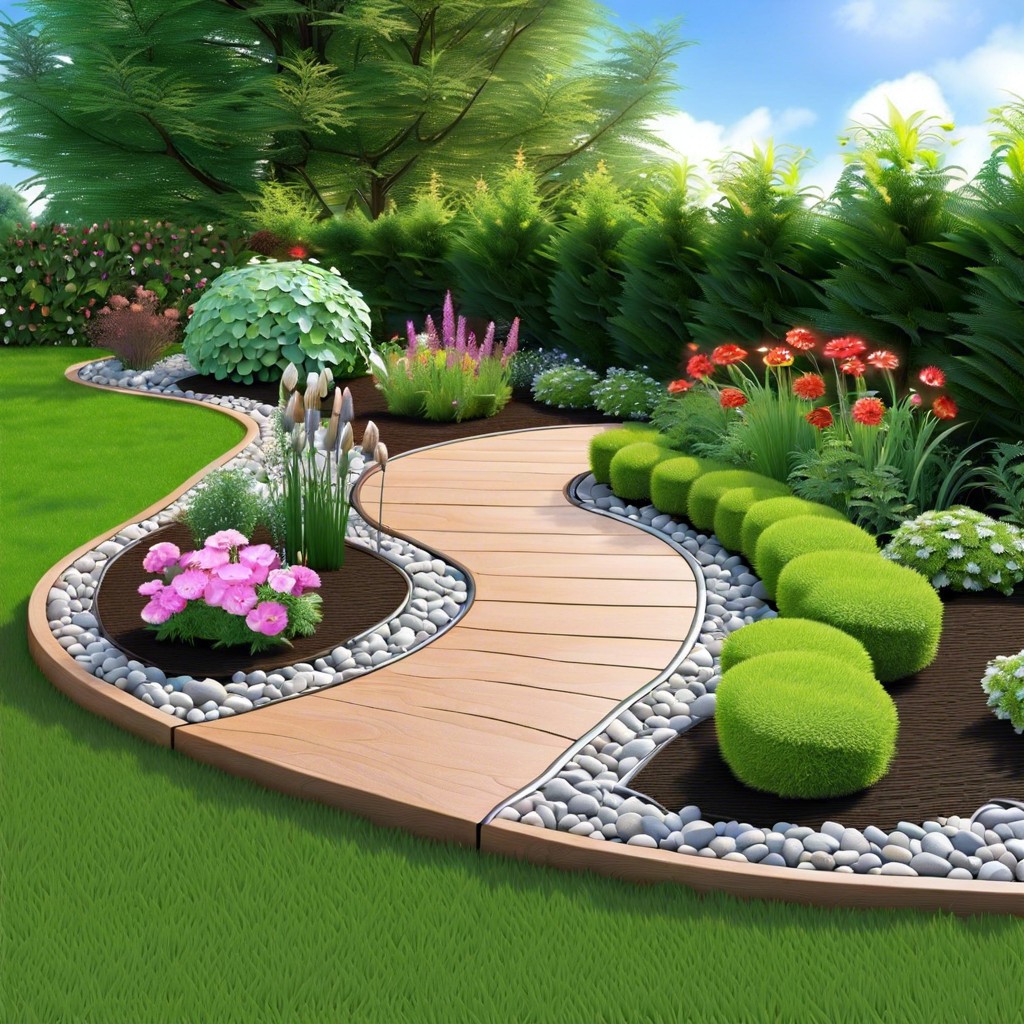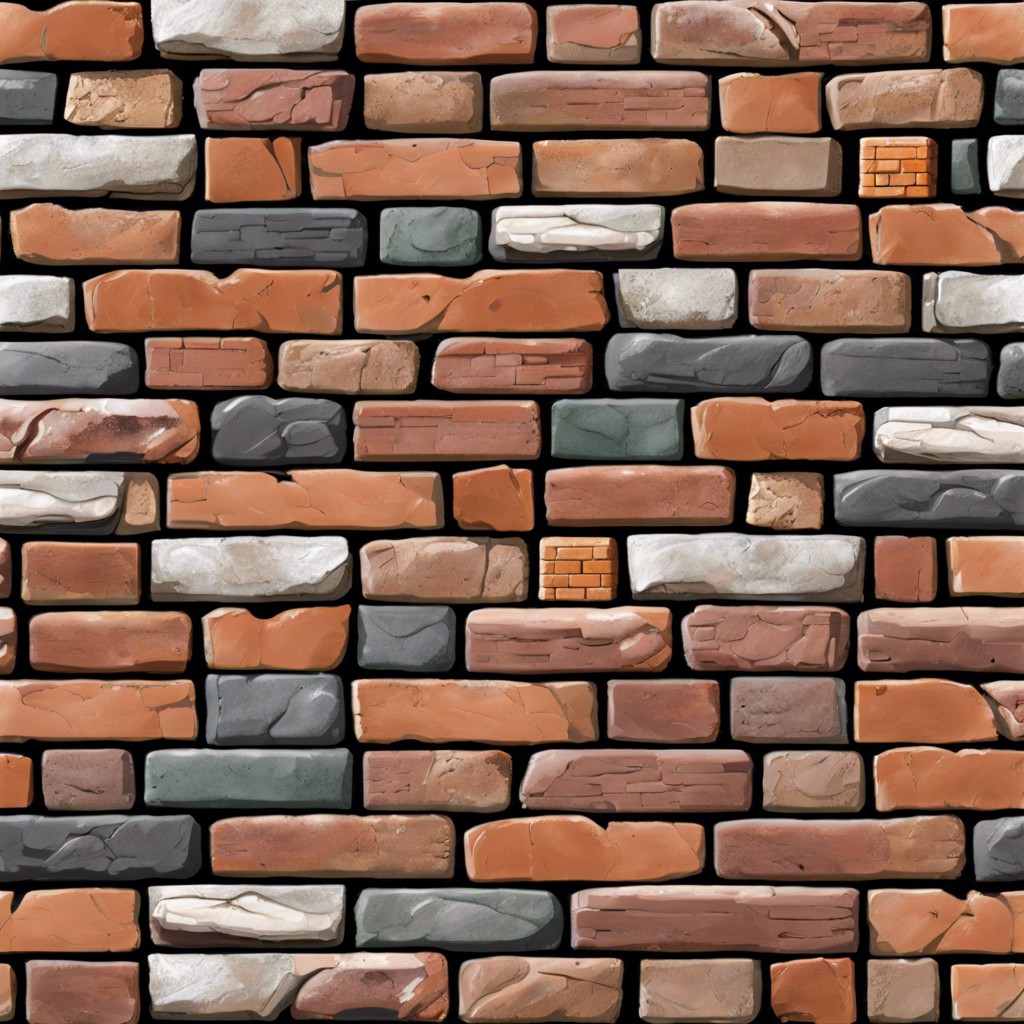Welcome to our buying guide on landscape timbers, designed to help you choose the right materials for your outdoor projects with confidence and clarity.
Key takeaways:
- Natural wood, pressure-treated wood, recycled plastic, composite, and railroad ties are different types of landscape timbers to choose from.
- Landscape timbers offer benefits such as versatility, durability, affordability, and ease of installation.
- Proper installation involves measuring, leveling, stacking, securing, and checking for balance.
- Regular inspection, cleaning, sealant application, proper drainage, and avoiding ground contact are essential for maintaining landscape timbers.
- Safety precautions should be taken when working with pressure-treated timbers, including wearing protective gear, minding the workspace, handling cut-offs carefully, gardening with caution, and washing up afterwards.
Types of Landscape Timbers

Landscape timbers come in a variety of materials, each offering different benefits to suit your gardening and landscaping needs:
**Natural Wood:** A traditional choice favored for its aesthetic appeal, natural wood timbers, like cedar and redwood, are resistant to rot and pests due to their inherent oils.
**Pressure-Treated Wood:** These are popular for their durability and affordability. Treated with chemicals to ward off decay and insect damage, they are ideal for projects requiring longevity.
**Recycled Plastic:** An eco-friendly alternative, plastic timbers are impervious to moisture and insects and will not rot or splinter over time, providing an excellent option for environmentally conscious designs.
**Composite:** Made from a mixture of wood fibers and recycled plastics, composite timbers offer the look of wood with the durability of plastic, striking a balance between beauty and resilience.
**Railroad Ties:** Although heavier and sometimes more challenging to work with, reclaimed railroad ties provide a rugged, rustic look and are extremely sturdy for structural projects.
Each type of timber has its applications, depending on your project’s aesthetic, structural requirements, and environmental considerations. Whether you choose natural wood for its classic charm or recycled materials for sustainable constructions, there’s a landscape timber that’s right for your outdoor space.
Benefits of Using Landscape Timbers
Landscape timbers offer an array of advantages for gardeners and homeowners looking to beautify their outdoor spaces. Their versatility is a significant perk, allowing for the creation of various garden structures including raised beds, edging, and retaining walls. These wooden elements are not only functional, providing clear separation between different areas of the garden, but they also add a natural, rustic charm to the landscape.
Durability is another benefit, especially with certain wood types like cedar, which are naturally resistant to rot and pests. This characteristic ensures that your garden structures can withstand the elements and time. Moreover, landscape timbers are generally more cost-effective compared to other hardscaping materials like stone or brick, making them a budget-friendly option for large-scale projects.
Additionally, they are relatively easy to work with. Even those with basic DIY skills can cut and secure the timbers, making it an accessible weekend project. And for the eco-conscious, there’s the option to use recycled plastic timbers, which combine the durability of plastic with the aesthetic of wood, all while supporting environmental sustainability.
Finally, they contribute positively to soil health by facilitating good drainage when used in raised beds, thus promoting vibrant plant growth. With such attributes, landscape timbers are an excellent choice for both practical gardening needs and aesthetic landscape design.
Installation Tips for Landscape Timbers
Before delving into the installation process, make sure you have all the necessary tools and materials ready. You’ll need a shovel, tape measure, level, drill, landscaping stakes, and screws or spikes to secure the timbers.
Start by plotting out where you plan to lay the timbers and measure the length of the area. This ensures you purchase the right quantity of materials. After measuring, use a shovel to clear and level the ground where the timbers will sit. An even surface is crucial for stability and to prevent shifting over time.
For a more secure fit, consider digging a shallow trench, about half the depth of the timber, to nestle it into the ground. This step helps to anchor the timber and offers extra support against erosion and weather conditions.
Next, stack the timbers to your desired height. It’s important to stagger the joints, similar to brickwork, for additional strength. Use a drill to create pilot holes and then fasten the layers of timbers with long landscaping spikes or screws. This secures the structure and keeps the timbers from separating.
Lastly, check the entire structure with a level. This is a vital step to ensure your landscape feature is balanced and looks professionally done. If necessary, add or remove soil beneath the timbers to achieve the level surface.
Remember, while installing by yourself can be a rewarding project, don’t hesitate to seek professional advice if you hit a roadblock. A well-installed landscape timber addition will enhance your outdoor space for years to come.
Maintenance and Care for Longevity
To ensure your landscape timbers stay in prime condition for years to come, consider the following maintenance tips:
Regular Inspection: Periodically check your timbers for signs of decay, insect infestation, or damage. Early detection means simpler fixes and can prevent larger issues down the road.
Cleaning: Dirt and debris can retain moisture against the wood, encouraging rot. Gently clean the surfaces with a brush or a mild detergent solution to keep them dry and reduce the risk of deterioration.
Sealant Application: Applying a wood sealant or a stain with a sealant can provide a barrier against moisture and ultraviolet light. This should be done every few years, depending on the product’s recommendations and weather exposure.
Proper Drainage: Ensure that the landscape area around your timbers has good drainage to prevent water from pooling. Excessive moisture can accelerate wood decay.
Avoid Ground Contact: Where possible, keep the timbers elevated from direct contact with soil which can speed up the rotting process.
By embracing these practices, you’ll help your landscape timbers resist the elements and maintain their structural integrity and aesthetic appeal.
Safety Considerations With Pressure Treated Timbers
When working with pressure-treated landscape timbers, it’s essential to prioritize safety. These timbers often contain chemicals that help to prevent rot and insect damage, but they can also pose risks if not handled properly.
**Gear Up for Protection:** Before cutting or sanding pressure-treated wood, always wear gloves, a dust mask, and safety goggles. These precautions prevent skin contact with preservative chemicals and inhalation of sawdust that could contain these substances.
**Mind Your Workspace:** Carry out cutting and sanding outdoors or in well-ventilated areas to minimize inhaling any potentially hazardous particles. Sawdust from pressure-treated timber shouldn’t be inhaled or left to accumulate.
**Handling Cut-Offs Carefully:** Be thoughtful about how you dispose of scraps from pressure-treated timbers. Never burn them; burning can release toxic chemicals into the air. Instead, follow your local regulations for safe disposal.
**Gardening with Caution:** If you’re using pressure-treated timbers for raised garden beds, consider lining them with a barrier to prevent any potential chemicals from leaching into the soil where you grow your vegetables.
**Washing Up:** After handling pressure-treated wood, always wash your hands thoroughly, especially before eating or touching your face. This practice is a simple yet crucial routine to avoid transferring any residual chemicals.
By keeping these points in mind, you can enjoy the durability of pressure-treated landscape timbers while maintaining a safe environment for yourself, your family, and the ecosystem.




